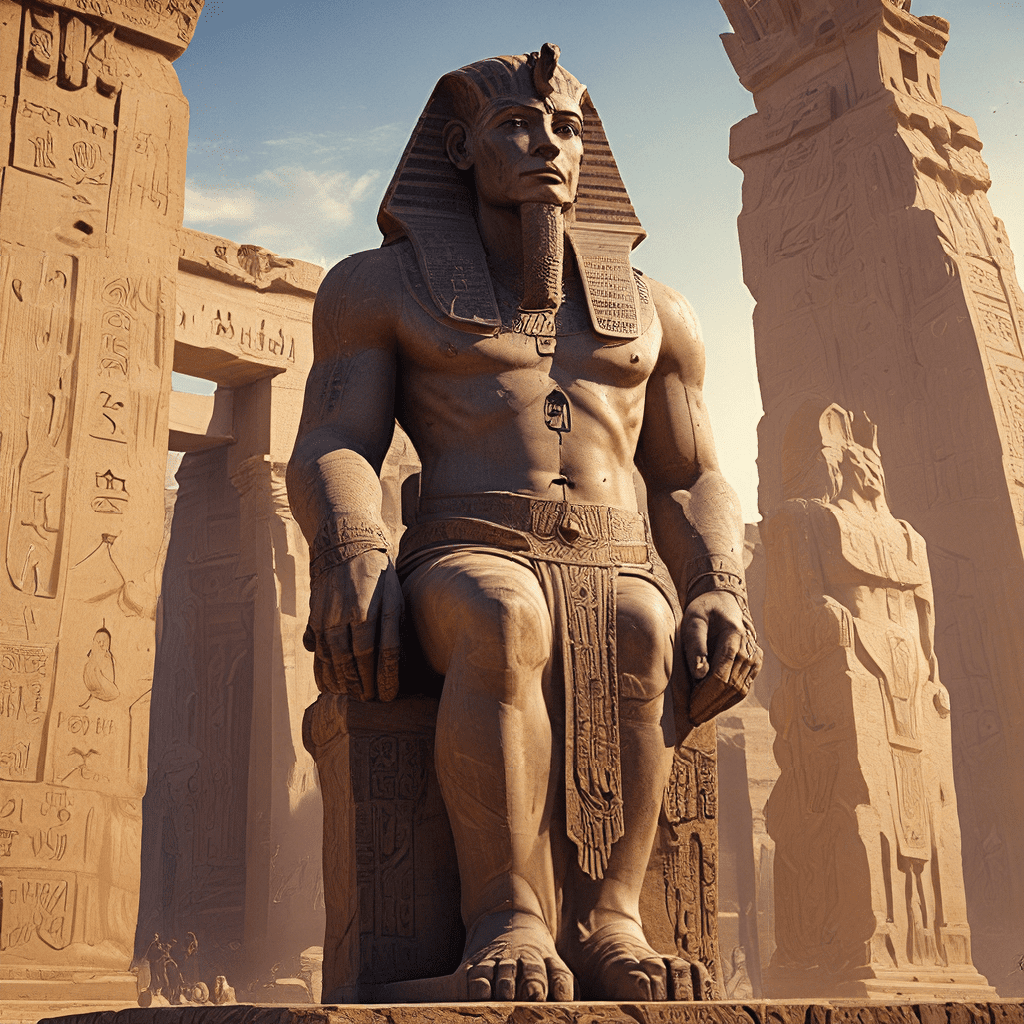Amenhotep III: The Builder of the Colossi of Memnon
Amenhotep III, one of the most powerful pharaohs of ancient Egypt, reigned from 1386 to 1353 BCE. His rule was marked by peace, prosperity, and a remarkable focus on monumental architecture. One of his most enduring legacies is the Colossi of Memnon, two colossal statues that stand as a testament to his ambition and power.
1. The Reign of Amenhotep III
Amenhotep III ascended to the throne at a time when Egypt was experiencing a period of great wealth and stability. His reign was characterized by peace and prosperity, allowing him to focus on ambitious building projects and artistic patronage. He expanded the Egyptian empire, secured trade routes, and fostered diplomatic relations with neighboring kingdoms. His reign witnessed a golden age of arts and crafts, with exquisite sculptures, paintings, and jewelry produced during this period.
Amenhotep III was a devout follower of the sun god Amun, and he constructed numerous temples and monuments in his honor. His dedication to the god is reflected in the colossal statues at Thebes, now known as the Colossi of Memnon, which were built at the beginning of his reign.
2. The Colossi of Memnon: A Monumental Legacy
The Colossi of Memnon are two enormous statues of Amenhotep III, located on the west bank of the Nile River near the ancient city of Thebes. The statues stand at a height of approximately 65 feet (20 meters) and are carved from sandstone blocks. They were initially part of a larger temple complex dedicated to the king and the sun god Amun.
The Colossi were constructed in the early years of Amenhotep III’s reign, signifying his desire to establish his authority and divine power. They were initially intended to be a grand representation of the king’s status as a god-king, with their imposing size and grandeur serving as a powerful symbol of his reign.
3. The Construction of the Colossi
The construction of the Colossi was a truly monumental undertaking. Each statue was carved from massive blocks of sandstone, which were transported to the site from quarries in the nearby Gebel Tingar. The blocks were carefully shaped and fitted together, forming the colossal figures.
The sheer scale of the Colossi posed significant engineering challenges for the ancient Egyptians. They had to develop innovative techniques to move and assemble the heavy blocks. The task required a vast workforce of skilled laborers, artisans, and engineers, all working under the supervision of the king’s architects.
4. The Colossi as a Royal Symbol
The Colossi stand as a powerful testament to Amenhotep III’s authority and divinity. They were intended to represent the king as a god-king, a being who possessed both human and divine qualities. The statues’ imposing presence and the intricate details of their carvings were designed to inspire awe and reverence in those who beheld them.
The Colossi’s connection to the sun god Amun is evident in their location within the temple complex. The statues were positioned facing east, allowing them to catch the first rays of the rising sun, symbolizing the king’s connection to the divine power of the sun god.
5. The “Singing” Colossi: A Mystery
The Colossi of Memnon became famous in the ancient world for their “singing.” After an earthquake in 27 BCE, one of the statues developed a crack, and the rising sun would cause it to emit a strange, musical sound, akin to a groan or whistle. This phenomenon captivated travelers and scholars for centuries, prompting various theories and speculations about its origin.
Some believed the sound was a supernatural phenomenon, a sign from the king’s spirit. Others proposed more scientific explanations, such as the expansion and contraction of the stone due to temperature changes. The “singing” Colossi became a popular tourist attraction, with visitors traveling from far and wide to experience this mysterious phenomenon firsthand.
6. The Colossi in the Context of Ancient Egyptian Architecture
The Colossi of Memnon are a striking example of the monumental architecture that characterized ancient Egyptian civilization. They stand as a testament to the Egyptians’ skill and ingenuity, their ability to create structures that defied the limitations of time and technology. Their grandeur was not merely decorative; it was a reflection of the Egyptians’ belief in the power and importance of their pharaohs.
The Colossi also offer insight into the Egyptian worldview, their belief in the afterlife and the importance of remembering and honoring their kings. The statues were meant to ensure that Amenhotep III would be remembered and honored long after his death.
7. The Colossi Today: A Tourist Attraction
The Colossi stand today as a reminder of ancient Egypt’s grandeur, captivating visitors with their sheer size and the mysteries surrounding them. The “singing” phenomenon ended in the 19th century when the statue was repaired, but the Colossi remain an enduring symbol of ancient Egypt’s architectural prowess and its enduring legacy.
The Colossi are now a popular tourist destination, visited by millions of people each year. They offer a tangible link to the past, allowing visitors to experience the grandeur of ancient Egyptian civilization and to marvel at the engineering feats of a bygone era.
8. The Colossi in Literature and Art
The Colossi of Memnon have been a source of fascination for artists, writers, and scholars for centuries. They have been depicted in countless ancient texts and paintings, with their imposing presence capturing the imagination and inspiring awe. The statues have also served as inspiration for numerous works of literature and art, including poems, novels, and paintings.
The Colossi continue to be a subject of study and debate, reflecting the enduring power of ancient Egyptian culture and the enduring mysteries of these monumental statues.




